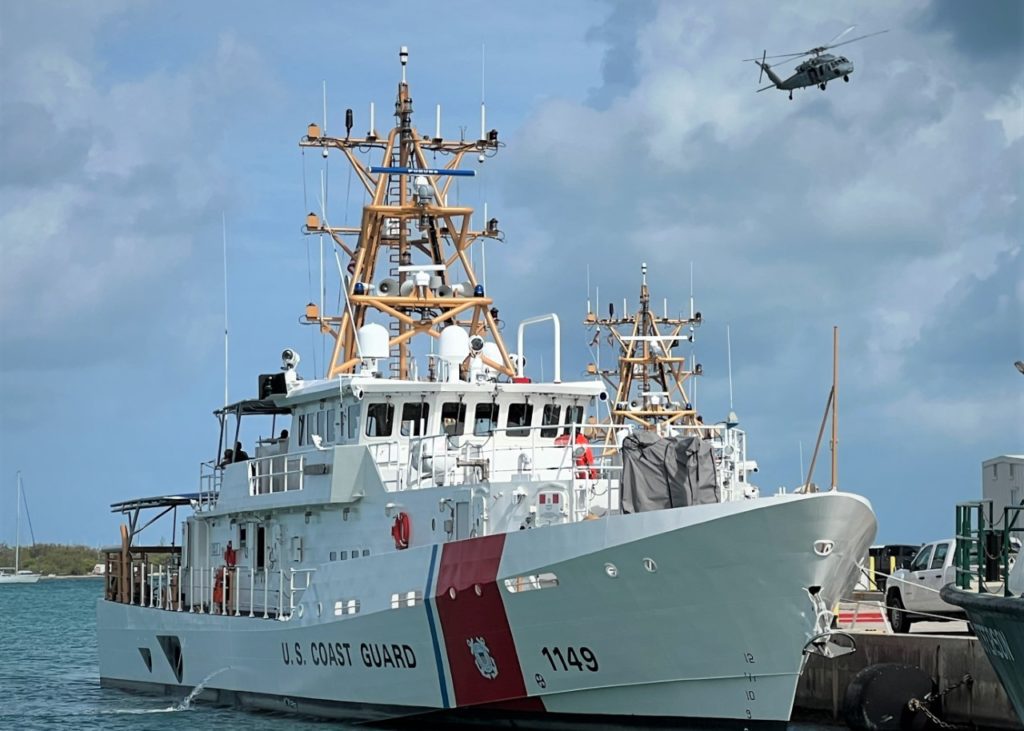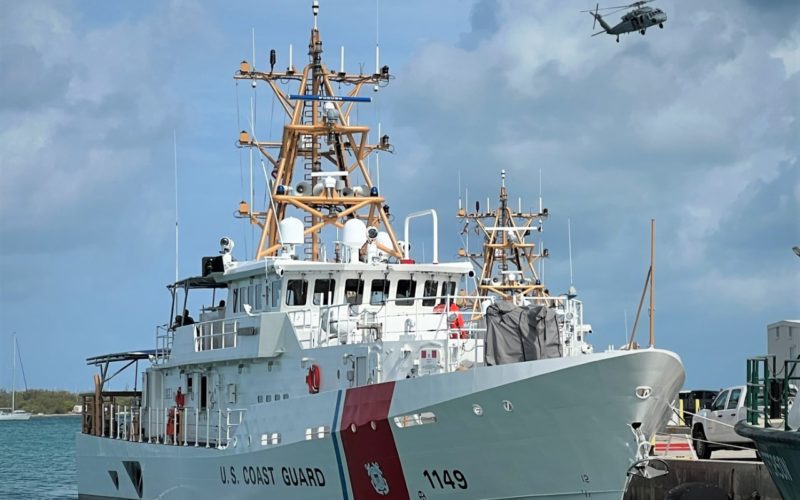(LOCKPORT, La.) — Bollinger Shipyards has delivered USCGC Douglas Denman to the U.S. Coast Guard in Key West, Fla. This is the 175th vessel Bollinger has delivered to the Coast Guard over a 35-year period and the 49th fast response cutter (FRC) delivered under the current program.
“I could not be more proud of the over 650 men and women of the Bollinger team that built the USCGC Douglas Denman,” said Bollinger President and CEO Ben Bordelon. “Pound for pound, the quality and capabilities of the FRC platform is unmatched and can be looked upon as a model government acquisition program. We look forward to continuing to support the U.S. Coast Guard for decades to come.”

USCGC Denman will travel to Alaska where it will be commissioned on Sept. 28 in its new home port of Ketchikan, in the 17th District of the Coast Guard. Once there, it will serve and safeguard the public, protect the environment and its resources, and defend the nation’s interests in the Alaskan maritime region. The 17th District encompasses over 3,853,500 square miles and over 47,300 miles of shoreline throughout Alaska and the Arctic.
Last month at the commissioning ceremony of USCGC Charles Sutphin in New York City, Vice Adm. Steven Poulin, Coast Guard Atlantic Area commander, lauded the “enhanced seakeeping” capabilities of the Bollinger-built FRC platform.
Earlier this year, President Joe Biden signed the Consolidated Appropriations Act for fiscal year 2022, which included a $130 million increase for two additional FRCs, continuing the program beyond its 64-vessel program of record. This is the second time Congress has added FRCs beyond the original 58-vessel program of record.
Each FRC is named for an enlisted Coast Guard hero who distinguished themselves in the line of duty. Douglas Denman joined the Coast Guard at the age of 18. Showing promise as a boat driver, he was sent to New Orleans to train at Higgins Industries, builder of the U.S. military’s first operational landing craft.
Denman was assigned to the No. 4 landing craft aboard USS Colhoun as coxswain. After landing Marine raiders at Tulagi Island in August, 1942, Colhoun patrolled, delivered provisions and war material to the Marine 1st Division on Guadalcanal Island. During patrols Japanese bombers attacked Colhoun, with the bombers destroying Denman’s Higgins boat.
Denman received severe facial wounds as he was thrown up against a bulkhead. Denman remained on board as he and a shipmate carried wounded comrades to the ship’s bow and floated them clear of the sinking ship. He and his shipmate gathered dozens of life jackets and threw them to victims struggling to stay afloat in the oily water.
Denman managed to jump off the vessel before the ship slid below the surface. Denman saved many lives while risking his own. Denman survived along with 100 of Colhoun’s original crew of 150 officers and men. For his wounds and heroism in the face of great danger, Denman received the Silver Star and Purple Heart medals.
The FRC is an operational “game changer,” according to senior Coast Guard officials. FRCs are consistently being deployed in support of the full range of missions within the Coast Guard and other branches of our armed services. This is due to its exceptional performance, expanded operational reach and capabilities, and ability to transform and adapt to the mission.
FRCs have conducted operations as far as the Marshall Islands — a 4,400-nautical-mile trip from their home port. Measuring in at 154 feet, FRCs have a flank speed of 28 knots, C4ISR suite (command, control, communications, computers, intelligence, surveillance and reconnaissance), and stern launch and recovery ramp for a 26-foot, over-the-horizon interceptor cutter boat.
– Bollinger Shipyards

